|
|
| |
|
|
| |
|
|
|
|
| |
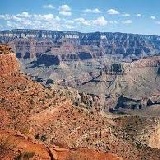 Travel
America Travel
America
Learn before you travel. This section of Fun Easy
English focuses on facts and other cool stuff about
your favorite U.S. state. This is great English
reading practice. This page focuses on the state of
Montana. |
 Hey
if you cannot understand something on this page, Hey
if you cannot understand something on this page,
then use the Fun Easy English
dictionary
(opens in a new window) |
|
|
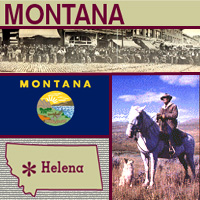 Montana Montana
Montana is known as "Big Sky Country". The members
of the Lewis and Clark expedition were the first
white explorers known to have set foot in Montana.
It joined the United States in 1889 as the 41st
state. The name Montana comes from the Spanish word
Montana, meaning "mountainous," although the eastern
part of the state consists of gently rolling
pastureland. The Anaconda Company had a stranglehold
on the state's copper industry for about 100 years,
but today Montana is known as a tourist destination
for those drawn to its many trout streams and wide
open spaces. Its capital is Helena and the state
flower is the bitterroot. |
|
Montana
State Flag
The Montana flag displays a representation of the
state seal on a field of deep blue. The legislation also
describes "golden fringe along the upper and lower borders
of the flag." Above the great seal is the word "Montana" in
gold Helvetica Bold font (the letters are to equal 1/10 the
vertical measurement of the flag).
The original banner was hand-made and carried by Montana
volunteers in the Spanish-American war, but the design was
not adopted as Montana's official state flag until 1904.
The state seal displays symbols of Montana's history and
natural beauty. A sunrise shines over snowy mountains.
Waterfalls, the Missouri River, mountains, hills, trees, and
cliffs are shown behind three tools (a pick, a shovel, and a
plow) which are symbols of Montana's mining and farming
history. A ribbon with the state motto, Oro y Plata (Spanish
for "gold and silver ") is displayed at the bottom of the
seal. |
|
Source:
State Symbols USA |
|
|
 Montana
State Facts Montana
State Facts
Picture: state seal of Montana |
|
State Capital |
Helena |
|
Nickname |
Treasure State |
|
Motto |
Oro y Plata (Gold and Silver) |
|
Statehood |
November 8,1889 (41st) |
|
Origin of Name |
Based on Latin or Spanish word for "mountainous" |
|
Largest Cities |
Billings, Great Falls, Butte, Missoula, Helena |
|
Border States |
Idaho, North Dakota, South Dakota, Wyoming |
|
Area |
145,556 sq. mi., 4th largest |
|
State Bird |
Western Meadowlark |
|
State Flower |
Bitterroot (lewisia rediviva) |
|
State Tree |
Ponderosa pine (pinus ponderosa) |
|
State Song |
Montana |
 Travel and tourism site
for Montana - This state travel and territorial tourism
site provides ideas for your vacations, meetings, and more. Travel and tourism site
for Montana - This state travel and territorial tourism
site provides ideas for your vacations, meetings, and more. |
|
|
Montana Stories |
|
|
The Metis Project: When They Awake
Rock and roll, hip-hop, jazz and Metis. You know about the first
three styles of music, but have you ever heard of Metis music? All
these styles have something in common -- they are influenced by
other types of music. Metis music comes from a mixture of two
cultures -- Native American rhythms and European tunes.
The Metis people are the descendants of European fur traders and
Indian women who lived on the Plains in both the United States and
Canada. Metis music tells a story. And people can dance to it. The
fiddle is the major instrument used in Metis music. Other
instruments include the harmonica, the hand drum, the mouth harp
(harmonica), and finger instruments such as bones or spoons.
In Helena, Montana, a musical project explores the importance of
Metis fiddle music. "When They Awake" is the name of the project,
and it is based on a prediction by Canadian Louis Riel, a teacher,
writer, leader and hero to the Metis people, who said, "My people
will sleep for 100 years, but when they awake, it will be the
artists who give them their spirit back." It's possible that some of
the artists he was thinking of were musicians. |
|
|
Montana Is ...
Do you know why Montana is often called Big Sky Country? If you've
ever been there, then you know that the sky seems so "big" because
the state is sparsely populated and free of tall buildings. The sky
goes on forever, uninterrupted by a lot of structures, like you see
in many big cities.
"I love everything about Montana," cowboy poet Mike Logan says in
his book Montana Is ..., "I still feel like I'm spending every day
in heaven."
Logan loves Montana so much he published a book of his poetry and
photographs of the state so he can share Montana's beauty with
others. Logan moved to Montana in 1968, and in the following years
he has spent many days in its wilds, photographing this "marvelous
big-skied state." Logan has won national acclaim for his keen
insight and spirit, and he has been the featured poet at cowboy
poetry gatherings throughout the United States and Canada. His words
and photographs have appeared in many books, magazines, and
calendars. Logan's poems reflect his deepest vision of what "Montana
is."
What does your state mean to you? |
|
|
Glacier National Park, Montana
In 1910, Congress established Glacier National Park in Montana.
Conservationist George Bird Grinnell played a key role in the
creation of this park in order to preserve the land's natural
beauty. Indians have always revered this region. The Blackfeet,
Salish, and Kootenai Indians, who have lived in the area for
hundreds of years, consider it a sacred place.
Glacier National Park is named for the glaciers that produced its
landscape. A glacier is a moving mass of snow and ice. It forms when
more snow falls each winter than melts in the summer. The snow
accumulates and presses the layers below it into ice. The bottom
layer of ice becomes flexible and therefore allows the glacier to
move. As it moves, a glacier picks up rock and gravel. With this
mixture of debris, it scours and sculptures the land it moves
across. This is how, over thousands of years, Glacier National Park
got all its valleys, sharp mountain peaks, and lakes. There are more
than 50 glaciers in the park today, though they are smaller than the
huge ones that existed 20,000 years ago.
In addition to its glaciers, mountains, and valleys, Glacier
National Park covers approximately 1.4 million acres and includes
200 lakes and streams. The park is also home to many different types
of wildlife, including black and grizzly bear, moose, golden and
bald eagle, bighorn sheep, mountain goat, and whitetail and mule
deer. |
|
|
Native Reign
Do you know the story of the famous battle at Little Big Horn,
Montana?
The United States wanted to build a road through Native American
lands in Montana because gold had been discovered in the area of
Little Big Horn. In 1876, General George Custer and his men were
sent to make the Native Americans give up the land, even though the
U.S. had guaranteed that it belonged to them. There was a battle and
the Northern Cheyenne and other Native Americans defeated Custer. It
was a crushing blow, and five months later, the U.S. attacked again.
This time, the Cheyenne surrendered, and they were sent to a
reservation in Oklahoma. Within two months of their arrival,
two-thirds of the tribe became sick and many died. Chief Dull Knife
and other Northern Cheyenne leaders pleaded for a reservation for
their people back in Montana, but the U.S. refused them.
Chief Dull Knife was determined to return to Montana. In 1878, he
and Little Wolf (another chief of the Northern Cheyenne) led what
was left of their people and traveled more than 400 miles, managing
to defeat or avoid the various Army units sent to bring them back to
Oklahoma. They broke up into two groups -- one led by Dull Knife and
the other by Little Wolf -- but both were eventually caught. Those
led by Little Wolf were allowed to remain in Montana, but Dull Knife
and his group were imprisoned. When they refused to return to
Oklahoma, an attempt was made to starve them into obeying. They made
a daring escape, in which many were killed and recaptured, but Dull
Knife and others got away and made it to the safety of the Pine
Ridge Reservation in South Dakota. Eventually a reservation was
established for the Northern Cheyenne in Montana, where Dull Knife
and his people were finally allowed to settle, rejoining Little
Wolf's group. But sadly, by then, most of Dull Knife's people had
died.
The Northern Cheyenne tell this story and other stories through
their performing troupe Native Reign. The troupe combines
traditional Native American dances with contemporary music to
celebrate the history and traditions of the tribe. |
|
|
Montana Horse Story
You have probably heard of the Rock and Roll Hall of Fame and
Museum. But do you know about the National Cowgirl Museum and Hall
of Fame, and the National Cowboy and Western Heritage Museum?
If you are from Montana, you probably do. Many Montanans are
remembered in these two museums because the horse has played an
important part in the state's history, economy, and romantic image.
Most of the state is rangeland used in the livestock-ranching
industry for the production of beef cattle and sheep. Horses are
used to round up the cattle and sheep, so horse riding is a very
important skill to have if you live there.
Cowboys and cowgirls show off their riding skills at the many rodeos
held each year across the state. Several cowgirls from Montana have
been inducted (admitted as members) into the National Cowgirl
Museum, including cowgirl-photographer Barbara Van Cleve. She is a
nationally recognized artist who splits her time between her family
ranch, the Lazy K Bar, near Melville, Montana, and her photographic
studio in Santa Fe, New Mexico. Another Montanan, Dan Mortensen, was
inducted into the Cowboy Museum in 1997. Mortensen is 1997 World
All-Around Champion and 1993-1995, 1997 and 1998 World Saddle Bronc
Riding Champion in the "Rodeo" category. |
|
|
Libby High School: Documenting Local History
What makes your city or town like no other? During the summer of
1999, a group of teenagers from Libby High School formed a team to
tell the world why Libby, Montana, is unique. Some of the students
were interested in photography and some in history, but each student
documented his or her own view of life in Libby. Several teachers at
the high school worked with their students on the project.
The students covered several local events in their project,
including Logger Days, a four-day festival held in early July, and
Nordicfest, an annual three-day event celebrating the town's Swedish
heritage. Logger Days celebrate Libby's historic timber industry
with food, parades, and crafts. Highlights of the celebration
include logging competitions such as a "Lumberjack Relay" race and
sawing and ax-throwing events.
Nordicfest remembers the early 1900s in Libby, when a lumber mill
was established and Scandinavian loggers came from Minnesota. The
celebration, which started in 1985, features craft and quilt shows,
a parade and Fjord horse show and food like Swedish meatballs and
"Vikings on a stick." |
|
|
History of Farming and Ranching: A Study of
the Local Culture by St. Ignatius High School
There is a problem in Mission Valley, Montana. It's losing its
farmers. Dairy farming, potato and grain farming, cattle ranching,
horse ranching and hog raising are still occurring in Mission
Valley, but there are fewer farms and ranches of 100 to 1,000 acres.
The big farms are being divided into smaller 10- to 40-acre "ranchettes"
that are being sold to people from cities of nearby states. They
come to escape the noise and traffic of city life but have no roots
in the local traditions. The longtime local farmers and ranchers are
worried that the newcomers will make it more difficult to preserve
the area's native culture and traditions.
Five students from St. Ignatius High School helped the farmers. The
students collected stories, historical documents, art and geological
information about the farms, ranches and culture of Mission Valley.
They also recorded "oral histories" -- stories told by the citizens.
The students' teacher used the materials they had collected in
history class. Teachers refer to materials such as these as "primary
sources," because they tell a story you won't find in a book. Not
only have the students learned about their local heritage, but also
the farmers and ranchers have found a way to pass on the traditions
that are important to them. |
|
Source:
Library of Congress |
|
 National
Forests, Parks, and Monuments of Montana National
Forests, Parks, and Monuments of Montana
The following is a description of national
forests, parks, and monuments in the state
of Montana. If you plan to visit or live in
Montana for awhile then you should
definitely plan to visit some of these
fantastic places. |
|
|
|
National Forests |
 Beaverhead-Deerlodge Beaverhead-Deerlodge
The largest National Forest in Montana, it
encompasses several mountain ranges of the
Rocky Mountains. The forest includes the
Anaconda-Pintler and Lee Metcalf wilderness
areas and sections of the Continental Divide
Trail and Nez Perce National Historic Trail. |
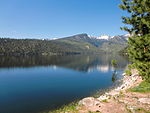 Bitterroot Bitterroot
Bitterroot National Forest is located in the
Bitterroot and Sapphire mountains, reaching
its highest point at 10,157 ft (3,096 m) at
Trapper Peak. The forest is named for the
bitterroot plant. This national forest is
also partially located in the state of
Idaho. |
 Custer Custer
Custer National Forest includes the
Beartooth Highway and the Capitol Rock and
the Castles National Natural Landmarks. The
forest's Absaroka-Beartooth Wilderness
includes Granite Peak, the highest point in
Montana at 12,807 ft (3,904 m). This
national forest is also partially located in
the state of South Dakota. |
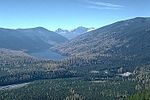 Flathead Flathead
Bordering Glacier National Park, Flathead is
home to grizzly bears, bull trout, and
Canada lynx. The forest manages four
wilderness areas, including the Bob Marshall
and Great Bear wildernesses. |
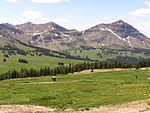 Gallatin Gallatin
Bordering the north side of Yellowstone
National Park, Gallatin National Forest
contains parts of both the
Absaroka-Beartooth and Lee Metcalf
wilderness areas. Quake Lake was formed on
the Madison River when an earthquake
launched a landslide across the river in
1959. |
 Helena Helena
The Continental Divide Trail travels almost
80 mi (130 km) through the forest, which
surrounds Montana's capital city. The
Elkhorn Mountains are the only Wildlife
Management unit in the National Forest
System. |
 Idaho
Panhandle Idaho
Panhandle
There are two wilderness areas, Cabinet
Mountains and Salmo-Priest, and numerous
recreation opportunities in Idaho Panhandle
National Forest. This forest ranges from the
Canada–US border to the Saint Joe River,
which is the highest navigable river in the
world. This national forest is also
partially located in the states of Idaho and
Washington. |
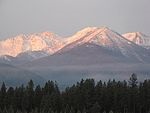 Kootenai Kootenai
Kootenai includes the Cabinet Mountains and
the Kootenai and Clark Fork rivers. The
Noxon and Cabinet Gorge reservoirs are on
the Clark Fork within the forest. The
Northwest Peak Scenic Area is in the Selkirk
Mountains. This national forest is also
partially located in the state of Idaho. |
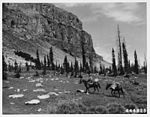 Lewis
and Clark Lewis
and Clark
Located in north-central Montana, this
forest includes seven mountain ranges and
large portions of the Bob Marshall and
Scapegoat wilderness areas. The forest
operates the Lewis and Clark Interpretive
Center in Great Falls. |
 Lolo Lolo
Located west of the Continental Divide and
containing parts of four wilderness areas,
this forest has 700 mi (1,100 km) of trails
and over 100 named lakes. There are at least
20 fish species, 60 mammals, 300 birds, and
1,500 plants in the forest. |
|
|
|
National Parks |
 Glacier Glacier
The U.S. half of Waterton-Glacier
International Peace Park, this park includes
26 glaciers and 130 named lakes surrounded
by Rocky Mountain peaks. There are historic
hotels and a landmark road called the
Going-to-the-Sun Road in this region of
rapidly receding glaciers.[46] The local
mountains, formed by an overthrust, expose
Paleozoic fossils including trilobites,
mollusks, giant ferns and dinosaurs. |
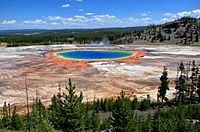 Yellowstone Yellowstone
Situated on the Yellowstone Caldera, the
park has an expansive network of geothermal
areas including boiling mud pots, vividly
colored hot springs such as Grand Prismatic
Spring, and regularly erupting geysers, the
best-known being Old Faithful. The
yellow-hued Grand Canyon of the Yellowstone
River contains several high waterfalls, and
four mountain ranges traverse the park. More
than 60 mammal species including gray
wolves, grizzly bears, black bears, lynxes,
bison, and elk, make this park one of the
best wildlife viewing spots in the country.
This national park is also partially located
in the states of Idaho and Wyoming. |
|
|
|
National Monuments |
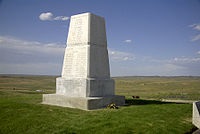 Little
Bighorn Battlefield Little
Bighorn Battlefield
This monument includes the 1876 Battle of
the Little Bighorn between George Armstrong
Custer's 7th Cavalry and a combined
Lakota-Northern Cheyenne and Arapaho force,
Custer National Cemetery, and the Reno-Benteen
Battlefield. |
 Pompeys
Pillar Pompeys
Pillar
Pompeys Pillar is a 150-foot (46 m)
sandstone pillar from the late Cretaceous
Hell Creek Formation next to the Yellowstone
River. It has an abundance of Native
American petroglyphs, as well as the
signature of William Clark, who named the
formation after Sacagawea's infant son. |
 Upper
Missouri River Breaks Upper
Missouri River Breaks
A series of badland areas characterized by
rock outcroppings, steep bluffs and grassy
plains along the 149-mile (240 km) Upper
Missouri National Wild and Scenic River in
central Montana, The Breaks is home to at
least 60 mammal species and hundreds of bird
species. Charles Marion Russell often
painted here, and Lewis and Clark traveled
on this pathway. |
|
|
|
|
Travel America |
|
|
Glacier National Park
(Beginner - Listening,
reading)
A video lesson which shows you an interesting place in America.
The English is
spoken at 75% of normal speed.
Great English listening and reading practice.
This video is all about Glacier National Park. |
|
|
|
|
|
|
|
|
Cool America |
 About the U.S.A. About the U.S.A.
About the U.S.A. is an American
Studies reader that examines the customs, government, and history of the
United States of America. The text provides a wealth of information on U.S.
geography and history; the roles of local, state, and federal government;
national holidays and symbols; the Constitution; and citizenship. The book,
which was written for intermediate to advanced learners of English, contains
a range of activities for language students to practice listening, speaking,
reading, and writing. (opens to a new PDF window)
Great English reading
practice. |
 About
America About
America
Learn about the fascinating history and government of
the United States of America. Lessons include content on
American Government, American History, and Integrated
Civics. Handouts with interactive games and
student-centered activities encompass all four language
skills: speaking, listening, reading, and writing.
Great English reading practice for
beginning to intermediate students. |
 American Teens Talk! American Teens Talk!
Americans Teens Talk! is a collection of interviews of
American high school students. Each interview is accompanied by vocabulary
notes and discussion questions. The interviews in American Teens Talk! give
learners a view into the lives of adolescents in the U.S. Through the
written format of the interviews, learners are able to increase their
vocabulary, practice their reading and listening skills, engage in
discussions, and learn more about U.S. culture. These
interviews come with audio programs.
Great English listening and
reading |
 Sing Out Loud Children's Songs Sing Out Loud Children's Songs
Sing Out Loud Children's Songs includes popular children's songs in the U.S.A. Posters accompany the
individual Sing Out Loud Children's Songs. These
songs come with audio programs.
Great English listening and reading
practice. |
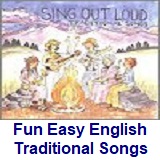 Sing Out Loud Traditional Songs Sing Out Loud Traditional Songs
The Sing Out Loud Traditional Songs
collection contains 13 traditional American folk songs and song lyrics.
Listen to the songs online, read the lyrics, and collect the posters that
accompany the songs. These
songs come with audio programs.
Great English listening and reading
practice. |
 Sing Out Loud American Rhythms Sing Out Loud American Rhythms
Do you love music? Want to use it
to learn English? Check out the hip-hop inspired song "Peace" from Sing Out
Loud American Rhythms. American Rhythms includes a variety of musical genres
from many different artists in the U.S.A. These songs will appeal to teens
and young adults. These
songs come with audio programs.
Great English listening and reading
practice. |
 Route
66 - Famous American Road Route
66 - Famous American Road
U.S. Route 66 (US 66 or Route 66), also known as the Will Rogers Highway, the
Main Street of America or the Mother Road, was one of the original highways in
the U.S. Highway System. The highway, which became one of the most famous roads
in the United States, originally ran from Chicago, Illinois, through Missouri,
Kansas, Oklahoma, Texas, New Mexico, and Arizona before ending in Santa Monica,
California, near Los Angeles, covering a total of 2,448 miles (3,940 km). It was
recognized in popular culture by both the hit song "(Get Your Kicks on) Route
66" and the Route 66 television show in the 1960s. |
Route 66: The Highway That's the Best
(Beginner - Listening)
A video lesson which shows you an interesting place in America.
The English is
spoken at 75% of normal speed.
Great English listening practice.
This video shows travel along Route 66, the most famous road in
America. |
Chicago: The Start of Route 66
(Beginner - Listening)
A video lesson which shows you an interesting place in America.
The English is
spoken at 75% of normal speed.
Great English listening practice.
This video shows travel along Route 66, the most famous road in
America. |
Going West for Decades on Route 66
(Beginner - Listening)
A video lesson which shows you an interesting place in America.
The English is
spoken at 75% of normal speed.
Great English listening practice.
This video shows travel along Route 66, the most famous road in
America. |
Arizona: The Spirit of Route 66
(Beginner - Listening)
A video lesson which shows you an interesting place in America.
The English is
spoken at 75% of normal speed.
Great English listening practice.
This video shows travel along Route 66, the most famous road in
America. |
Route 66 California: The End of the Trail
(Beginner - Listening)
A video lesson which shows you an interesting place in America.
The English is
spoken at 75% of normal speed.
Great English listening practice.
This video shows travel along Route 66, the most famous road in
America. |
Ten Must-See Route 66 Attractions
(Beginner - Listening)
A video lesson which shows you an interesting place in America.
The English is
spoken at 75% of normal speed.
Great English listening practice.
This video shows travel along Route 66, the most famous road in
America. |
Four Famous Foods On Route 66
(Beginner - Listening)
A video lesson which shows you an interesting place in America.
The English is
spoken at 75% of normal speed.
Great English listening practice.
This video shows travel along Route 66, the most famous road in
America. |
International Tourists Drawn to Route 66
(Beginner - Listening)
A video lesson which shows you an interesting place in America.
The English is
spoken at 75% of normal speed.
Great English listening practice.
This video shows travel along Route 66, the most famous road in
America. |
|
|
|
|
Search Fun Easy English |
|
|
|
|
|
|
|
|
|
|
|
|
|
|
|
About
Contact
Copyright
Resources
Site Map |